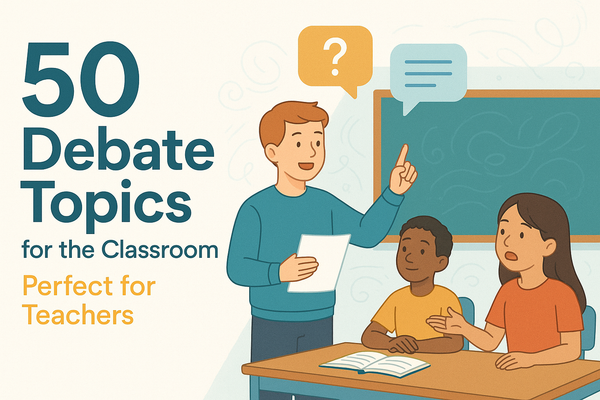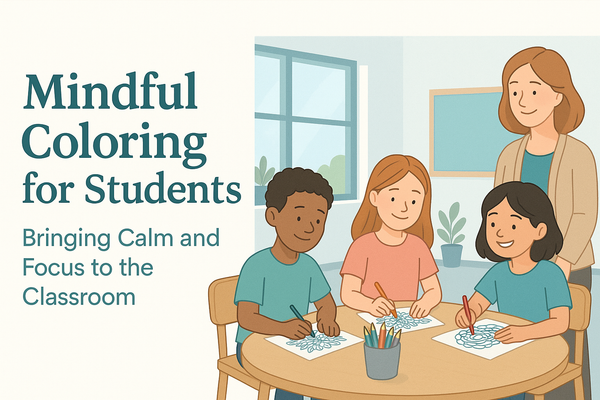Support Struggling Readers in the Classroom with Reading Interventions

Reading is a joyful escape for some students, whether it is reading stories or diving into current events. However, reading can also be an overwhelming and anxiety-inducing experience for others, especially when they have to read aloud in front of others.
As every learner comes with their own strengths, challenges, and pace of progress, delivering literacy instruction that suits everyone is no easy feat. Teachers often face time constraints and limited resources, making it even harder to reach students who need additional support.
This is where early reading intervention plays a crucial role. Effective interventions focus on key areas such as phonemic awareness, phonics, fluency, vocabulary, and comprehension. In this blog, we will explore targeted and engaging reading intervention activities that help diverse learners become confident, capable readers.
What is Reading Intervention?
Reading intervention is all about giving extra, focused support to students who are struggling to keep up with their reading. It is not just more of the same lessons - it is targeted teaching designed to meet each student where they are and help them move forward with confidence.
Within the Multi-Tiered System of Supports (MTSS), reading intervention can happen in different ways depending on how much help a student needs.
- Some children benefit from a bit of extra guidance within their usual classroom (Tier 1).
- Others may need small group sessions or one-to-one support outside the main lesson (Tier 2).
- More intensive support is offered for students who are significantly behind (Tier 3), often in smaller groups with tailored strategies that tackle the specific skills they are missing.
Ultimately, the goal of reading intervention is simple: to build stronger readers through personalised, timely support before frustration turns into a long-term struggle.
How Do You Know When a Student Needs Reading Intervention?
Recognising when a student needs reading intervention is the first and most important step toward helping them succeed. Not every student who reads slowly or makes occasional errors requires intervention, but there are consistent signs that may signal a deeper struggle.
1. Persistent Difficulty with Basic Skills
If a student regularly struggles with recognising letters, sounding out words, or understanding simple instructions, it may be a sign that their foundational reading skills, like phonemic awareness or phonics, are underdeveloped.
2. Limited Reading Fluency
Students who read in a slow, choppy, or robotic manner may be struggling with fluency. They may know the words, but reading lacks flow and expression, making comprehension harder.
3. Poor Comprehension
Some students can decode words accurately but still fail to understand what they have just read. Frequent confusion about the main idea, difficulty answering questions, or an inability to summarise are all signs.
4. Avoidance of Reading Tasks
A reluctance to read aloud, choosing not to read during free time, or displaying signs of frustration during reading sessions may indicate that a student lacks confidence or finds reading overly challenging.
5. Falling Behind Peers
If assessment data, classroom performance, or teacher observations show that a pupil is consistently behind their classmates, it may be time to explore intervention strategies.
6. Teacher Instinct and Ongoing Monitoring
Sometimes, it is simply a matter of professional judgement. Teachers who know their students well can often spot subtle signs of struggle early. Progress monitoring tools and regular informal assessments can help confirm whether intervention is needed.
Best Reading Intervention Activities for the Classroom
Supporting diverse learners means using a variety of engaging activities tailored to specific reading skills. Below are some of the most effective reading intervention activities you can implement in your classroom to support students at different stages of their reading journey.
1. Building Phonemic Awareness Through Sound Play
Phonemic awareness is the ability to hear, identify, and manipulate individual sounds in spoken words. It is one of the earliest and most essential reading skills. Without a solid foundation in this area, students may struggle to make sense of phonics and written language later on.
Playful and interactive sound games are highly effective ways to build phonemic awareness. Begin with simple listening and speaking activities where students identify whether two words rhyme or start with the same sound. Use familiar songs or rhymes to make this more enjoyable and accessible, especially for early learners or those with limited exposure to books at home.
Elkonin boxes (also known as sound boxes) are an excellent tool for segmenting words into individual phonemes. Students place a counter or token into a box for each sound they hear in a word. This visual and tactile method reinforces auditory processing and sound-symbol association. Stretching out words and identifying each sound helps students break the code of language in a fun, low-pressure way.
Do not forget the power of oral activities: clapping syllables, playing "I Spy" with beginning sounds, or swapping out sounds in simple words to make new ones (e.g., cat to cap). These kinds of exercises help students become comfortable manipulating language, which is crucial for successful decoding down the line.
2. Strengthening Phonics Skills with Structured Practice
Once students are confident with phonemic awareness, phonics instruction becomes the next key piece of the puzzle. Phonics is all about connecting sounds with written letters, allowing students to decode unfamiliar words and build fluency.
One of the most effective ways to provide phonics support is through a systematic and explicit phonics programme. Whether using a school-adopted scheme or supplementing your resources, consistency and repetition are critical. Begin with letter recognition and sound correspondence, then blend and segment simple CVC (consonant-vowel-consonant) words.
Multi-sensory activities work particularly well for struggling readers. You might have students build words using magnetic letters, trace letter shapes in sand, or tap out sounds on their arms while blending. For older learners or those needing more support, phonics flashcards and word-building games can offer extra reinforcement without feeling overly juvenile.
Phonics should be fun and functional. Short, frequent practice sessions embedded in everyday instruction help students retain what they have learned and apply it confidently during reading. Do not be afraid to revisit earlier concepts for reinforcement; mastery is the goal, not rushing through a curriculum.
3. Boosting Reading Fluency Through Repetition and Expression
Reading fluency is the ability to read smoothly, accurately, and with expression; it is essential for comprehension. Students who read in a monotone way often struggle to understand and enjoy what they are reading. Fortunately, fluency can be nurtured through repeated, supported practice.
One powerful fluency activity is repeated reading. Choose short, engaging passages or familiar books, and have students read them multiple times across a few days. This activity can also be incorporated into library activities. With each repetition, they become more confident and automatic in their reading. This not only builds speed and accuracy but also reduces cognitive load, allowing better focus on meaning.
Choral reading is another excellent tool, especially for students who may feel shy reading aloud on their own. Reading in unison as a class helps develop rhythm and pacing while also offering a safe space to practise pronunciation and expression.
Partner reading adds a social, collaborative aspect. Pair a stronger reader with a pupil who needs support, or let both learners take turns reading lines or paragraphs. This peer model encourages confidence and can spark discussions that deepen understanding.
Finally, modelling fluent reading yourself is one of the most powerful tools you have. When students hear an adult read with expression and clarity, they absorb the natural cadence and emotion that brings the text to life.
4. Expanding Vocabulary with Word-Rich Activities
Vocabulary is at the heart of reading comprehension. A limited vocabulary can severely hinder a student's ability to make sense of what they are reading. Fortunately, there are many creative and effective ways to build word knowledge in the classroom.
Start with word walls, bulletin boards, or classroom doors; display new or frequently used words prominently and interact with them regularly. Do not just post them; make them a living part of your classroom. Use them in sentences, play games like "Word Wall Bingo," or ask students to draw pictures or act out the meanings.
Context clues are another essential skill for vocabulary development. When reading a passage, teach students how to look around an unfamiliar word to find clues about its meaning. Encourage them to guess, test their guesses, and then confirm with a dictionary or glossary. This detective-like approach keeps learning active and engaging.
Word games are especially effective. Try "Word of the Day" challenges, matching synonyms and antonyms, or even creating mini-dictionaries or comic strips that use new vocabulary words. When students see new words in multiple contexts, their understanding deepens.
It is also helpful to expose learners to rich and varied language through read-aloud. Choose high-quality books with interesting language and discuss the meanings of unfamiliar words as you read. This naturally embeds new vocabulary and models how language works.
5. Strengthening Comprehension with Thoughtful Strategies
Reading comprehension is where all the other skills come together. It is the ability to understand, interpret, and reflect on what has been read. For struggling readers, comprehension can be especially challenging, but with the right strategies, it can be more manageable and enjoyable.
One effective strategy is teaching students to make predictions before and during reading. This keeps them actively engaged and helps them form a mental roadmap of the text. Ask questions like, “What do you think will happen next?” or “What clues tell you that?”
Visualising is another key technique. Encourage students to create mental images of the story as they read or to draw scenes from the text. This strengthens understanding and helps them connect with the material on a deeper level.
Summarising is a vital skill that helps learners identify the main idea and supporting details. Use graphic organisers like story maps or sequencing charts to guide them. Practise regularly with short passages and gradually move to longer texts.
Lastly, make connections. Help students relate what they are reading to their own lives, other texts, or the wider world. This makes reading more meaningful and reinforces that reading is not just about decoding; it is about making sense of ideas.
Using Technology to Support Reading Intervention
In today’s digital world, technology has become a powerful ally for teachers aiming to support struggling readers. Whether it is through apps, online programmes, or interactive whiteboards, integrating technology into reading intervention can make learning more accessible, engaging, and personalised.
1. Personalised Learning Tools
One of the greatest advantages of using technology is its ability to tailor content to a student’s individual reading level. Many reading intervention platforms use adaptive technology to assess a learner’s current ability and then provide targeted lessons and exercises. Teachers can also use AI-powered lesson plan generators to tailor lesson plans to the classroom's needs.
2. Interactive and Multisensory Engagement
Struggling readers often benefit from multisensory learning experiences. Digital tools can support this by combining visuals, sounds, and touch-based interactions. For example, apps that require students to trace letters on a screen while listening to the corresponding sound provide simultaneous visual, auditory, and kinaesthetic input.
3. Gamified Learning
Many educational apps use gamification to turn reading practice into an enjoyable activity. Games that reward students with points, badges, or progression levels can motivate reluctant readers to stay engaged. This is particularly effective for younger students who may otherwise find reading tasks daunting or repetitive.
4. Text-to-Speech and Audiobooks
Assistive technologies like text-to-speech tools and audiobooks help students access content above their independent reading level. This supports vocabulary growth, listening comprehension, and confidence. Students can listen while reading along with the text, improving their fluency and reinforcing word recognition.
5. Real-Time Feedback and Progress Tracking
Digital platforms often provide instant feedback, which helps students self-correct and develop a sense of autonomy. For teachers, these tools offer valuable insights into each student’s progress, allowing for data-driven intervention and targeted support where it is most needed.
Conclusion
Supporting diverse learners through effective reading intervention is both a challenge and a rewarding responsibility. By incorporating a variety of evidence-based strategies, such as phonemic awareness games, structured phonics lessons, fluency-building practices, vocabulary enrichment, and comprehension activities, teachers can meet students where they are and guide them toward confident, independent reading.




